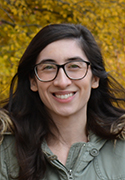Our trainees review webinars in their given fields and share abstracts to help colleagues outside their discipline make an informed choice about watching them. As our program bridges diverse disciplines, these abstracts are beneficial for our own group in helping one another gain key knowledge in each other’s fields. We are happy to share these here for anyone else who may find them helpful.
Dancing with Epilepsy: Pathology, Animal Models, and Translation
Dr. Anne E. Anderson
4/8/2016
Fralin Biomedical Research Institute
This webinar was a great resource and introduction to understanding epilepsy, its existence in society, its pathology, and a particular model they are investigating to potentially recapitulate an epilepsy phenotype, which is often utilized to test for potential anti-seizure drug efficacy.
Dr. Anderson begins by explaining that epilepsy is a highly prevalent disorder, with roughly 500 new cases diagnosed a year. Epilepsy as a medical diagnosis is characterized as experiencing two or more recurrent seizures, where a “seizure” is defined as experiencing abnormal, upregulated electrical activity in the brain. These “electrical storms,” per se, can either be focal (restricted to a specific region of the brain) or they can be generalized, where they occur throughout the brain. Alternatively, seizures that originate with a focal onset can develop into generalized seizures over time.
The speaker goes on to elaborate on the current treatment for epilepsy, which once were referred to as “antiepileptic drugs” (AEDS), are now classified as “anti-seizure drugs” (ASDs). Not all ASDs are one size fits all, as she goes on to explain. Epilepsy itself is confounding and complex, therefore, so are its treatments. Patients who do not experience drug-resistant seizures are typically prescribed one of the main ASDs available on the market, most of which primarily target receptors and ion channels that regulate neuronal excitability. This includes sodium channel blockers, glutamate receptor blockers, and GABA receptor agonists, to name a few.
However, the side effects of many of these drugs are noted to be highly intolerable by the patients that take them – sometimes, the effects do not even outweigh the experience of the seizure itself, depending on the individual. These types of side effects include cognitive decline, problematic psychiatric developments, and sedation (amongst others). There remain alternative treatments that many with resistance to ASDs turn to, these forms of therapies include surgery – such as hippocampal resection – to remove the area of seizure onset, electrical stimulation of the brain or vagus nerve, and diets that are ketogenic or have a low glycemic index.
Dr. Anderson’s lab ultimately used a conditional neuronal specific Pten knockout (ns-Pten KO) mouse model to study the effects of epilepsy. This model experiences specific deletion of neurons within the hippocampus, cortex, and cerebellum. Interictal seizures were also monitored within the model using an electroencephalogram (EEG) and that these seizures progressively worsen with age. NS-Pten KO mice also experience progressive mossy fiber sprouting, which is indicative of recurrent seizure activity in the hippocampus.
Overall, this guest speaker was highly engaged and presented an abundance of widely unknown information about epilepsy in general. I think this seminar would be useful to anyone who would like to understand and learn more about one of the world’s most prevalent neurological disorders.


